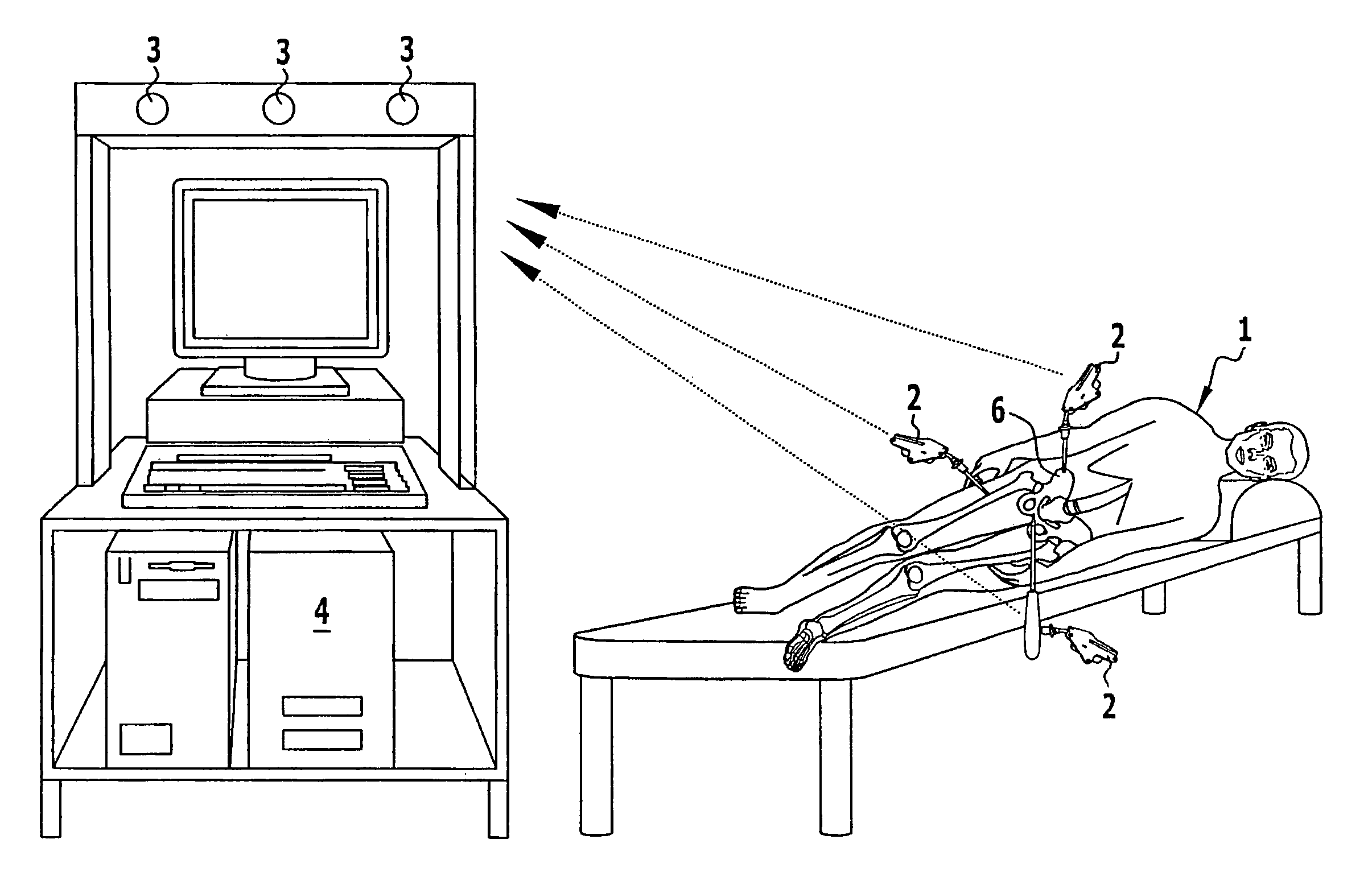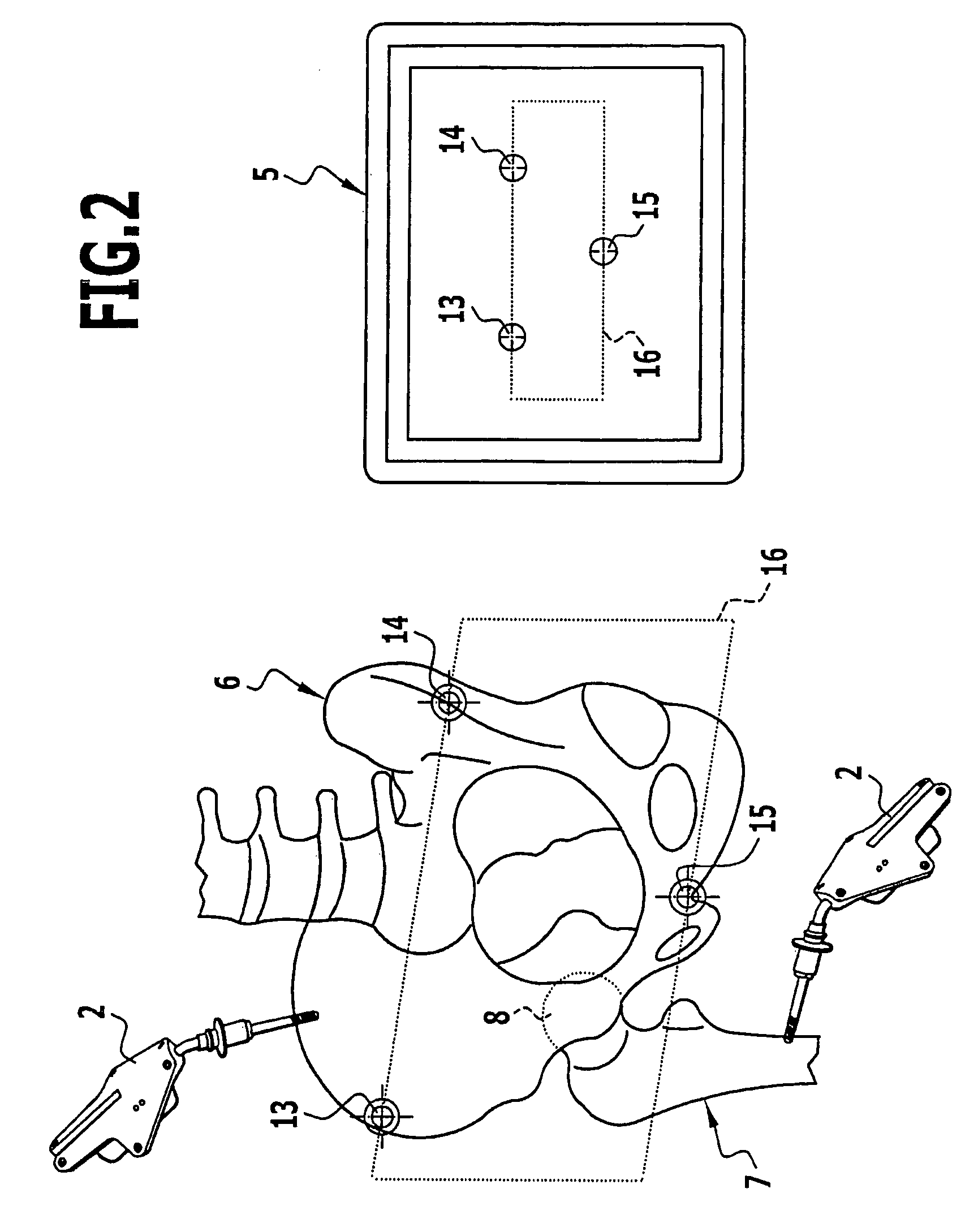Method and surgical navigation system for creating a recess to receive an acetabulum
a technology of acetabulum and recess, which is applied in the field of producing a cavity to receive an acetabulum, can solve the problems of extraordinarily difficult and unplaced acetabulum in the anatomical plan
- Summary
- Abstract
- Description
- Claims
- Application Information
AI Technical Summary
Benefits of technology
Problems solved by technology
Method used
Image
Examples
Embodiment Construction
[0060]To perform a hip joint implantation on a patient 1, a navigation system is used that can spatially determine the position and orientation—referred to jointly as disposition—of marking elements 2. These marking elements 2 can be fixedly connected to body parts, instruments etc., and therefore allow the disposition of these body parts and instruments to be spatially determined. In this case, the determination is achieved by means of stationary transmitters 3 that are spaced from one another and at the same time are configured as receivers and receive radiation emitted by them, which is reflected at spaced reflectors of the marking elements 2.
[0061]The position data of the marking elements 2 and thus of the body parts and instruments rigidly connected thereto are recorded in a data processing unit 4 and further processed, and these body parts and instruments can be represented in their disposition relative to one another on a screen 5 controlled by the data processing unit 4.
[006...
PUM
 Login to View More
Login to View More Abstract
Description
Claims
Application Information
 Login to View More
Login to View More - R&D
- Intellectual Property
- Life Sciences
- Materials
- Tech Scout
- Unparalleled Data Quality
- Higher Quality Content
- 60% Fewer Hallucinations
Browse by: Latest US Patents, China's latest patents, Technical Efficacy Thesaurus, Application Domain, Technology Topic, Popular Technical Reports.
© 2025 PatSnap. All rights reserved.Legal|Privacy policy|Modern Slavery Act Transparency Statement|Sitemap|About US| Contact US: help@patsnap.com



